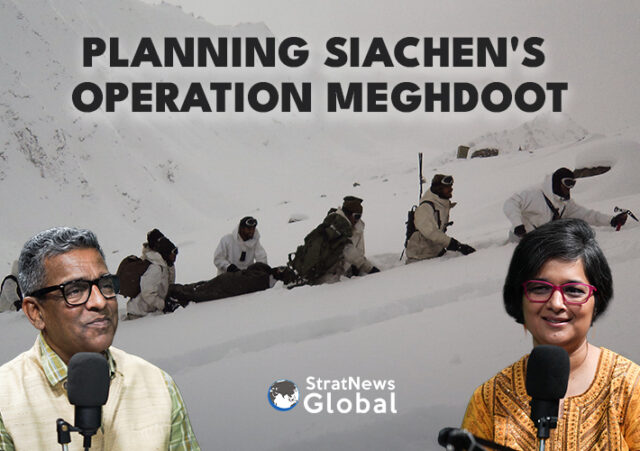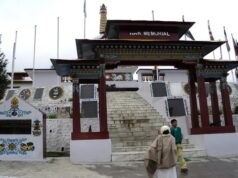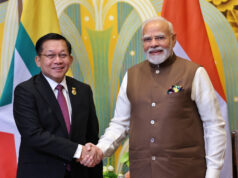40 Years Of Operation Meghdoot
On 13 April 1984, the Indian army launched a military offensive in bone-chilling temperatures, on the frozen heights of the Siachen glacier to wrest from Pakistan any claim it sought to hold on to the Siachen glacier. The daring operation was unlike any other, pre-empting a plan from Pakistan by a few days. In his book, ‘Beyond NJ 9842: The Siachen Saga’, StratNews Global Editor-in-Chief Nitin A. Gokhale, has detailed the planning and the people behind Operation Meghdoot, which has given India a tactical height advantage on the world’s highest battlefield. In this podcast, he tells Ketki Angre, why India felt the need for a mission like Operation Meghdoot and the heroic stories of the men in uniform who overcame the harshest weather and hostile conditions to put India ahead.
The Choice Of Baisakhi To Launch Operation Meghdoot
The person who planned the operation on the ground, Brigadier VN Channa picked April 13, 1984 as it was Baisakhi, not because it was an auspicious day but for tactical reasons. As Nitin A Gokhale explains, “In North India, especially Punjab, on both sides of the border in India and Pakistan, it’s a big festival. And, most of the Pakistani soldiers are of Punjabi origin. Most of them celebrate so they’re in a holiday mood. The leaders also have their guard down. And, also, mid-April (of 1984) on those heights beyond 20,000ft, there is snow everywhere. It’s difficult to operate there or even think of going and occupying those places.”
That’s exactly when India decided to launch the operation.
Colonel Narendra ‘Bull’ Kumar, The military Mountaineer With A Sharp Eye
Colonel Narendra ‘Bull’ Kumar was a well-known military mountaineer with a sharp eye for detail who noticed Pakistan’s ‘cartographic aggression’. He convinced the military leadership that it was imperative to access the higher reaches of the glacier to see what the Pakistanis were up to.
Pakistan Outwitted, Outmaneuvered, Outpaced
Operation Meghdoot began on April 13, 1984 when Captain Sanjay Kulkarni was dropped by helicopter on the dizzying heights of the glacier with his team. They were caught in a snowstorm and there was no contact with them for the next four days. When the weather cleared four days later, a hovering Pakistan helicopter saw that India was firmly in control of the Siachen glacier.





